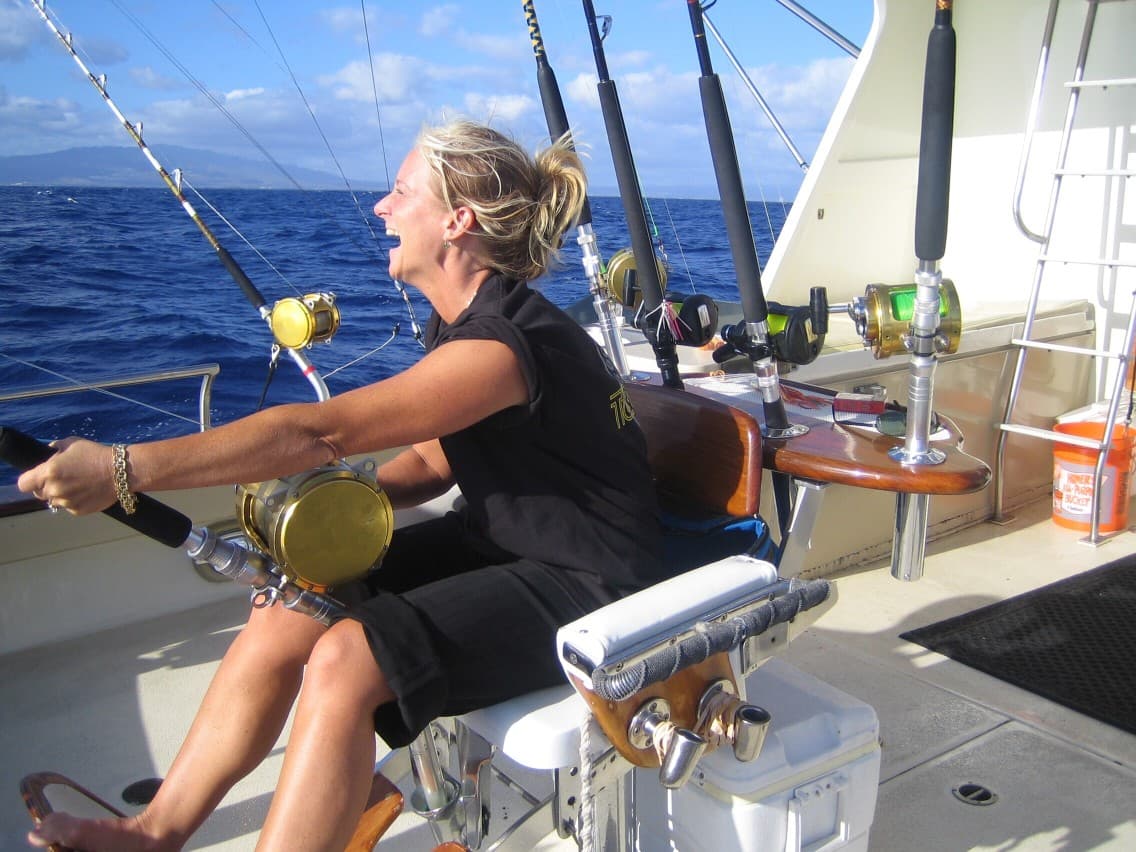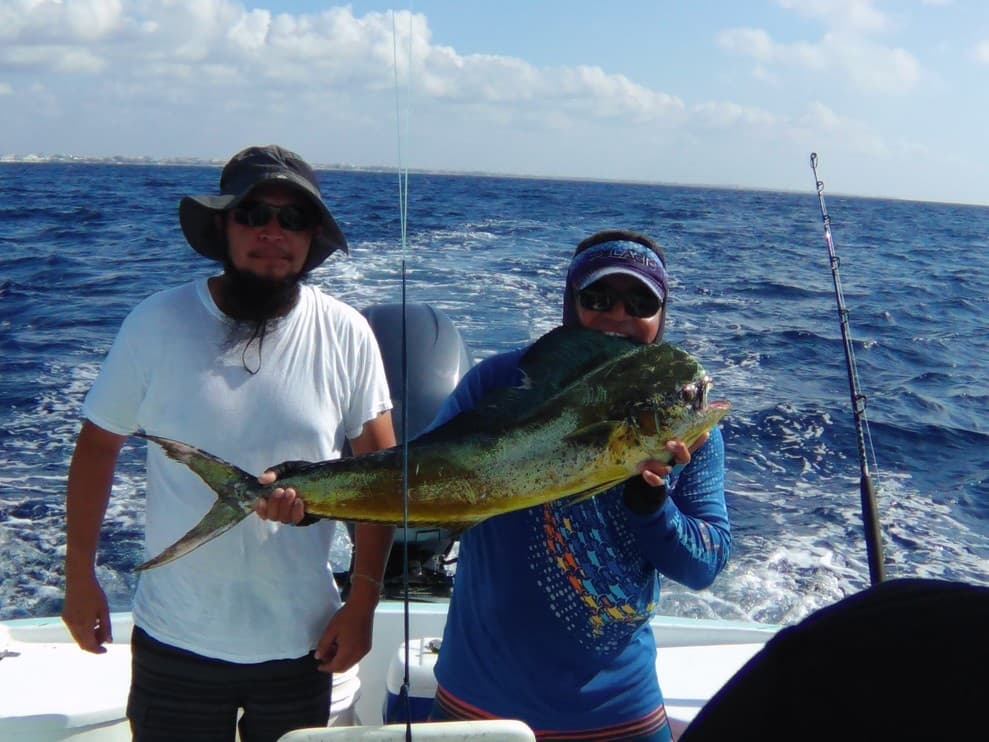So, you want to experience deep sea fishing? Great! You’re in for the time of your life. But before you head out on your charter, there are a few things you need to know. In this crash course, we’ll go over the basics of deep sea fishing, from the equipment you’ll need to the different types of fish you might catch. By the time you’re done reading, you’ll be ready to head out on your deep sea fishing adventure.
What is deep sea fishing?
Deep sea fishing is fishing in water deeper than the average recreational angler travels. It’s typically done off of a charter, but you can also head out on your own. Generally, you’ll be hanging around a depth of 10 feet or more. This article will focus on deep sea fishing off of a charter.
How deep do you normally go?
The average recreational angler will fish in water that’s between 10 and 30 feet in depth. Some anglers will fish in water that’s even deeper than that, but that’s not necessary for most fish. For the average angler, deep sea fishing is any fishing that’s done in water that’s deeper than 30 feet.
How is deep sea fishing different from other types of fishing?
Deep sea fishing differs from other types of fishing in several ways.
The first difference is that, as the name implies, you’ll be fishing at a much deeper depth than you would on your average fishing trip.
Another difference is the types of fish you might catch. Some of the types of fish you might catch are found in the deep sea, but only in certain areas. You might catch swordfish in the Gulf of Mexico, but you might not encounter them in the Pacific Ocean.
The last difference is the techniques you’ll employ. Some techniques, like bottom fishing, can only be used at certain depths. Others, like trolling, can only be used if you’re fishing from a moving vessel.
A deep sea fishing trip can be an exciting experience. However, it’s helpful to be aware of the different types of fishing available so you can make the most of your trip.

What equipment is needed for deep sea fishing?
For deep sea fishing, you’ll need specialized equipment. The first piece of equipment that you’ll require is a charter. While there are anglers that go out alone, you’ll want to go out with a charter to ensure your safety. Charters will typically be able to provide you with whatever equipment you need. However, if they don’t have the equipment you want, it’s crucial to let them know in advance so that they can provide you with what you require.
Top of Form
The most important piece of equipment you’ll need is a strong line. Most commercial charters will have a line for you to use, but you may want your own line. The most effective type of line for deep sea fishing is braided line. Braided line is made from several other strings and is much stronger than monofilament. Braided line is the type of line that is used by most deep sea fishing charters.
Bottom of Form
Another key piece of equipment is a reel. You’ll want a reel with plenty of storage, so that your line doesn’t get tangled as you’re fishing. Some deep sea reels even have extra spool storage, which can help if you’re using braided line.
A third piece of equipment you’ll need is a rod. Rods will typically be around 8-12 feet long.
Another piece of equipment you’ll need is lures. There are several different types of lures you can use. Some lures are designed for trolling, others are intended to attract certain fish. You can also get lure designed specifically for deep sea fishing.
You’ll also need a pair of binoculars. Binoculars will help you spot fish, which will help you decide where to cast.
You’ll need a fishing license, of course.
And, of course, you’ll need a fishing pole. Your choice of a fishing pole will depend on how you’re fishing.
What are the most successful techniques for deep sea fishing?
Deep sea fishing can be done using several different techniques. The first technique is called jigging. Jigging is performed by casting your line, reeling it in slowly, and then re-casting. Jigging is commonly used when fishing for amberjacks, mackerel, grouper, and tuna. Jigging will usually be done on the surface, but it can also be done a few feet below the surface. It’s a simple technique, but it can be very effective.
The next technique is called bottom fishing. Bottom fishing is typically done by dropping your line to the ocean floor and reeling it in as it sinks. It’s a very slow process, but it can be very effective. Sometimes, the fish will be so thick that you can catch several fish at once.
Trolling is done by dragging a lure behind a moving vessel. There are two different kinds of trolling: downrigging and planing. Downrigging involves rigging your boat with a downrigger. It’s a very effective way to catch fish quickly. Planing is done by using a trolling motor. Most that offer deep sea fishing services will provide you with a trolling motor. Planing is a very effective way to catch fish, but if you don’t have a trolling motor, you might not be able to do planing.
Live bait fishing is the act of fishing for live bait. There are several different species of fish that are suitable for bait, but the most common are squid, mackerel, and herring. You can also use artificial bait, which is just a plastic replica of a natural bait.
Float fishing is done by attaching a bobber to your fishing line. The bobber will help you spot fish and will also let you know when you’ve got a bite. This is a great way to introduce children to deep sea fishing, as it doesn’t require any special equipment and it’s a very easy technique to learn.
Night fishing is fishing at night. Night fishing is done in much the same way that daytime fishing is done, although you may use a different type of lure and you may use more light.
Charter fishing is an excellent way to experience deep sea fishing. Charters will provide you with all the equipment you need, so you can focus on fishing. Charters are also very convenient, as they will bring you to prime fishing areas and arrange everything such as meals and lodging. The charter will also handle the fish for you, so you don’t have to worry about cleaning them.
Party boat fishing is done by setting out on a group charter. Party boat fishing is great if you want to catch a lot of fish, but it’s not good if you want to catch trophy fish. Most deep sea charters will allow you to party boat fish, but if you want to keep your fish, you’ll need to charter a boat.
What are the most common deep sea fish?
There are several different types of fish you might catch when deep sea fishing.
The first type is swordfish. A swordfish is an excellent source of food, and can be caught using a variety of techniques, making it a great choice for deep sea fishing. There are several different types of swordfish, but the most common is the broadbill.
Another type of fish you might catch is marlin. Marlin are another tasty source of food, and they’re a fun fish to catch. Marlin are a great source of excitement, although they’re not as nutritious of food as swordfish. They’re also not quite as common as swordfish. The most common type of marlin is the blue marlin.
Another common deep sea fish is the sailfish. Sailfish are a fun fish to catch, and they’re a tasty source of food. Widespread popularity has made sailfish one of the most commonly caught fish in deep sea fishing, even if you don’t plan on eating them. A rare species, deep sea fishing can be successful using a variety of techniques.
The next most common deep sea fish are tuna. There are several different types of tuna, but the most common is the yellowfin tuna.
Another common deep sea fish is the wahoo. Wahoo are also a rich source of food and excitement. Trolling for wahoo is a bit more prevalent than trolling for other fish involved in deep sea fishing, and it’s a lot of fun to catch one. The most common type of wahoo is the broadbill.
Another common deep sea fish is the Mahi Mahi. Wading in shallow water and casting long distances to reach deep sea fishing targets like Mahi Mahi is a lot of fun, and it’s a great way to provide sustenance for your family. Tuna are also beautiful fish, which makes them fun to catch even if you don’t plan to eat them. Bony fish, such as grouper, can be caught using a variety of techniques, including deep sea fishing.
A less common, but still popular, deep sea fish is the snapper. Basing their recommendations on scientific data, Deep Sea Fishing experts recommend anglers targeting snapper when fishing for food. Hailing from the deep sea, snappers are beautiful fish that can be fun to catch, regardless of whether or not you plan on eating them. Sailing deep sea fishing forHailing from deep sea waters, mackerel are not as commonly caught as some of the other fish involved in deep sea fishing, but they can be landed using a variety of techniques.
The last common deep sea fish is the grouper. Hailing from the deep sea, grouper are an excellent source of food that is lots of fun to catch. Billed as one of the most beautiful fish in the sea, grouper are also some of the most fun to catch when fishing for deep sea fish. Widespread throughout the world’s oceans, groups of pelagic fish such as marlin, swordfish, and tuna can be caught using a variety of techniques.
Is deep sea fishing dangerous?
No, it is not. Deep sea fishing is an activity that is enjoyed by people all over the world. While it is true that there are some risks associated with any outdoor activity, deep sea fishing is no more dangerous than any other type of fishing.
What are the advisable safety tips for deep sea fishing?
There are several safety tips that you should keep in mind when deep sea fishing.
The first safety tip is to always wear a life jacket. Even if you’re a strong swimmer, it’s always better to be safe than sorry.
The second safety tip is to always let someone know where you’re heading. Deep sea fishing can be a lot of fun, but it’s smart to let someone know where you’ll be in case of an emergency.
The third safety tip is to be aware of the weather conditions. Deep sea fishing can be a lot of fun, but it’s important to be aware of the weather conditions and to be prepared for them.
The fourth safety tip is to be aware of your surroundings. There are many things that can be dangerous, so it’s important to be aware of your surroundings and to be prepared for them.
The fifth safety tip is to be cautious when handling fish. Some fish can be dangerous, so it’s wise to be cautious when handling them.
Conclusion
Deep sea fishing can be a lot of fun, but it’s imperative to be aware of the different types of fishing available. This is so you can make the most of your trip. With the right equipment and a bit of knowledge, you’ll be ready to head out on your deep sea fishing adventure.

